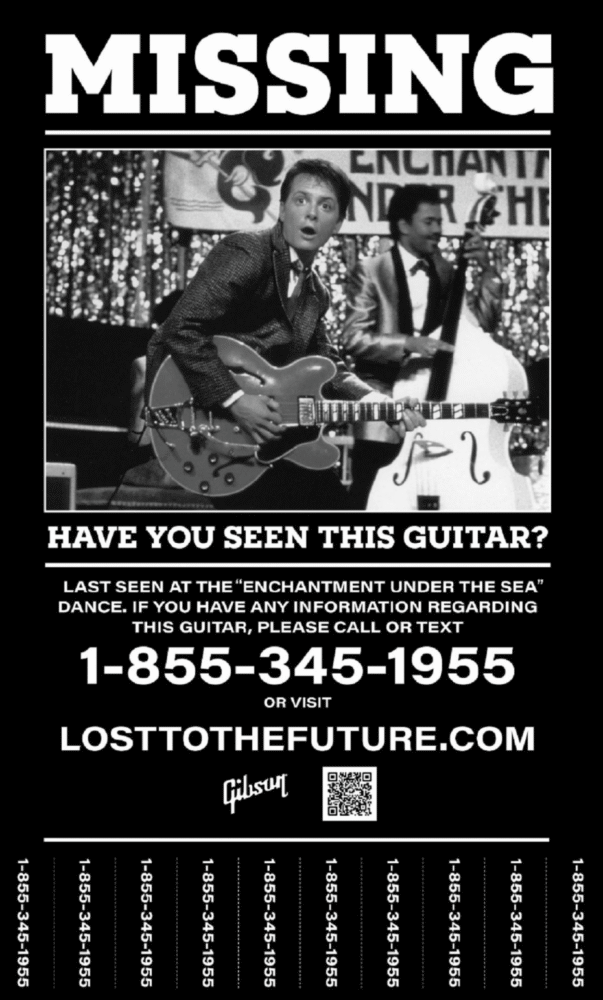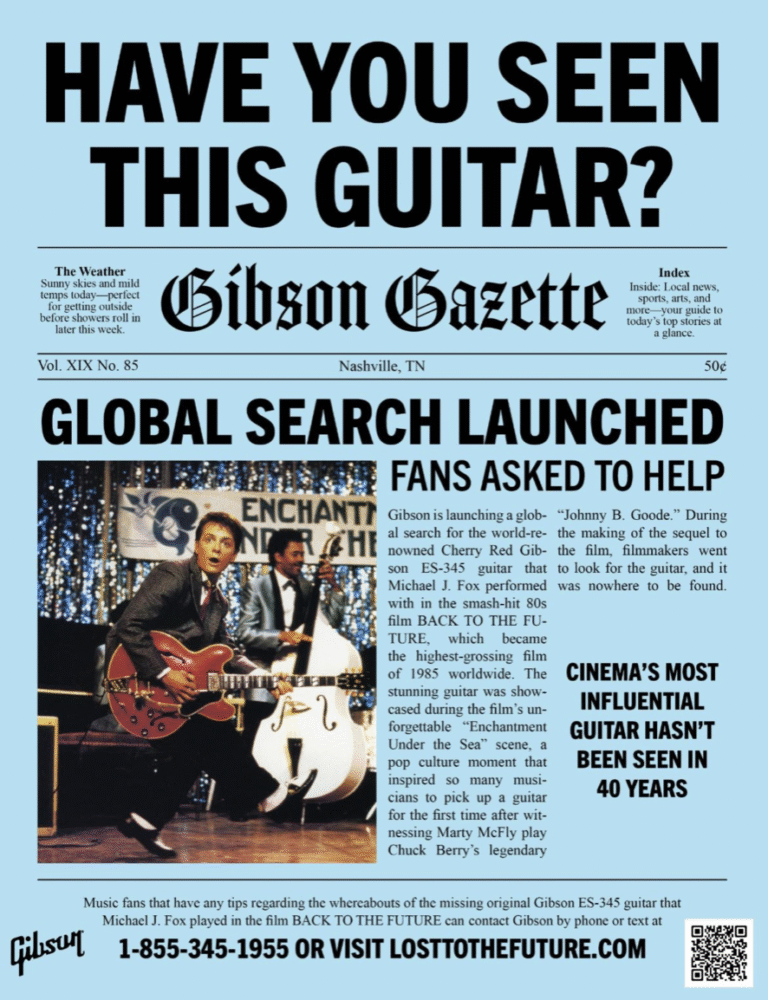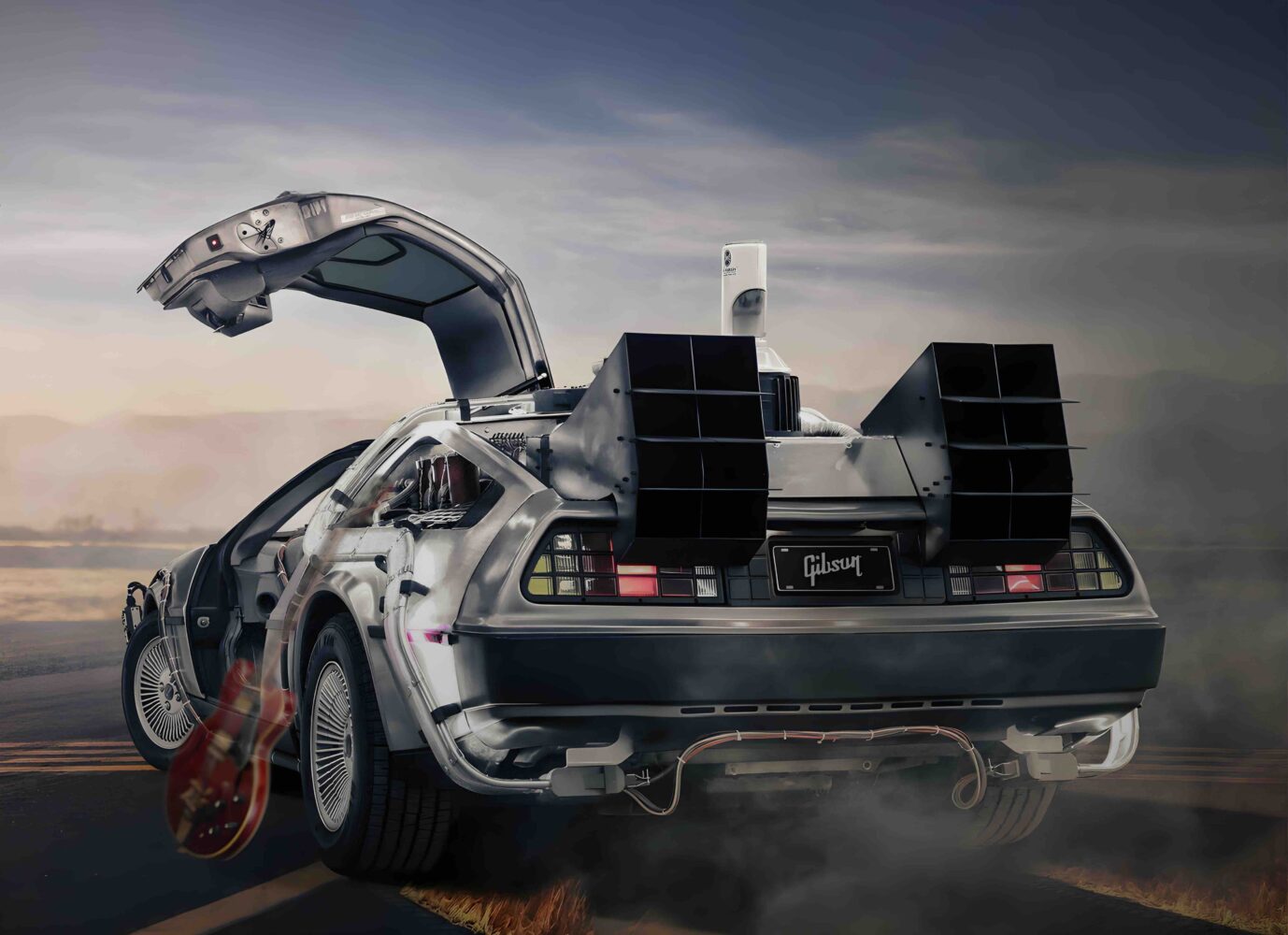Somewhere out there, in a storage room, attic, or forgotten back lot, sits a cherry red Gibson ES-345. Not just any guitar—but the guitar. The one that lit up the “Enchantment Under the Sea” dance in Back to the Future. The one Michael J. Fox, as Marty McFly, used to shred “Johnny B. Goode” in a moment that has since become etched in pop culture history. And now, nearly 40 years later, Gibson and the original Back to the Future team are on a mission to find it.
It’s a rare and delightful intersection of music, film, and mystery. Dubbed “Lost to the Future,” the global search is more than just a publicity campaign—it’s a cultural excavation, a chance to reconnect with an object that inspired generations to pick up a guitar. And it couldn’t come at a more fitting time, as the film’s 40th anniversary approaches and a new wave of fans rediscovers its magic.

Let’s not forget: this wasn’t just a prop. For many, that guitar scene wasn’t just entertaining—it was formative. Musicians like John Mayer and Chris Martin have credited Marty McFly’s legendary performance as their first real push toward picking up a guitar. It was theatrical, joyous, and just chaotic enough to feel believable—a teenager letting loose with all his musical heroes distilled into a few minutes of pure energy. It’s the kind of moment cinema doesn’t create very often anymore.
So, the hunt is on. Gibson is casting a wide net, asking collectors, fans, and the vintage gear community for leads. And accompanying it all is a forthcoming documentary—Lost to the Future—which promises to trace the guitar’s disappearance and cultural imprint in equal measure. Directed by Doc Crotzer, the film will feature interviews with the original cast, musicians inspired by the movie, and maybe—just maybe—the rediscovery of the guitar itself.
There’s something unusually satisfying about this kind of real-life treasure hunt. In an era of digital everything, where props are often replaced by CGI and stories by algorithms, the idea that a single, tangible object can carry so much cultural weight feels oddly grounding. The Gibson ES-345 isn’t just a piece of wood and wire—it’s a time capsule from one of the most iconic moments in ‘80s cinema.

Gibson’s involvement gives the search even more credibility. This isn’t a company jumping on a nostalgia bandwagon; this is a brand with a legitimate stake in musical history, and its leadership—particularly figures like Mark Agnesi and CEO Cesar Gueikian—clearly feel a personal connection to the story. For them, this isn’t just about reclaiming a lost artifact—it’s about honoring the instrument’s role in shaping a generation’s relationship with music.
And then there’s Michael J. Fox himself, lending his voice and story to the project. His passion for guitar, and his candid reflections on how the scene came together, add a layer of sincerity that’s hard to fake. It’s touching to hear him reflect on the ripple effect that one moment had, and how proud he is that it inspired others to go further than he ever could.
Whether the guitar is found or not, the journey feels worthwhile. It’s a celebration of film, of music, and of the power a single moment on screen can have on millions. And in a cultural landscape that often favors disposable trends, it’s a welcome reminder of the enduring magic that can come from genuine creativity, collaboration, and a little bit of rock ‘n’ roll.





